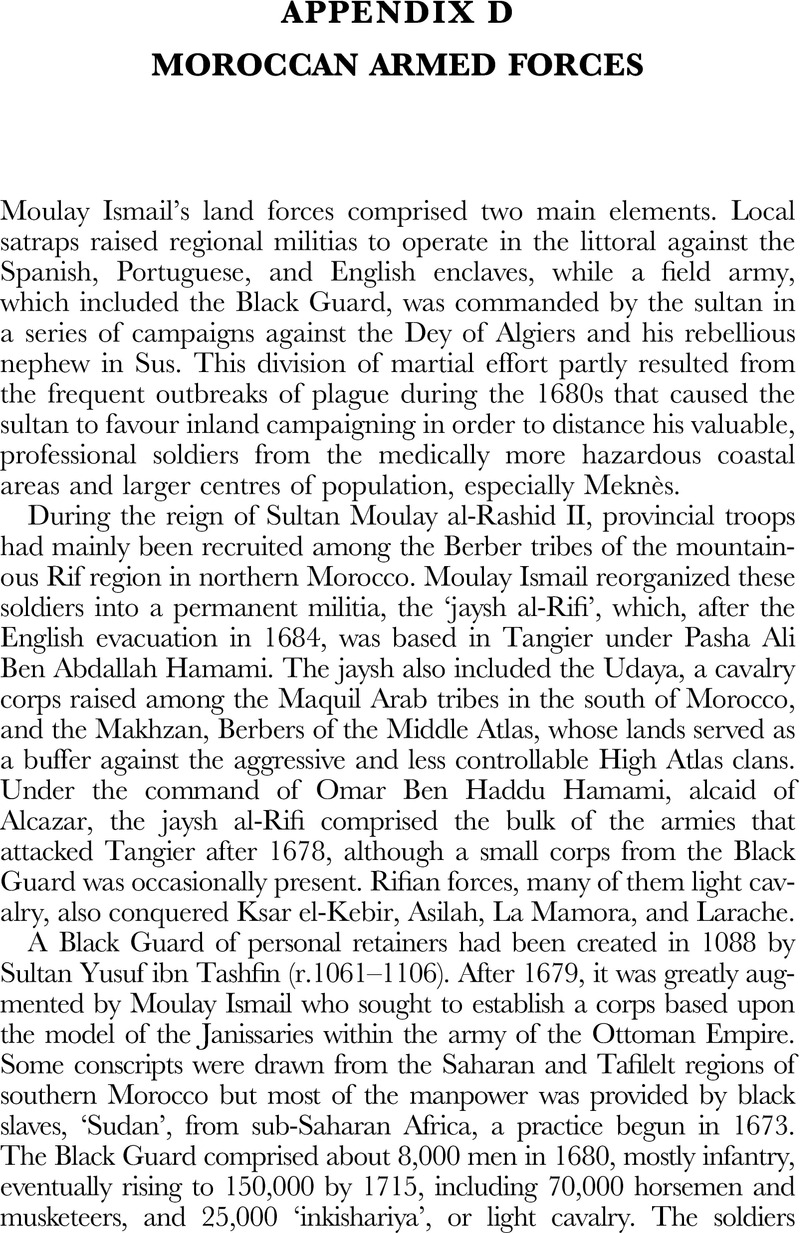No CrossRef data available.
Article contents
APPENDIX D MOROCCAN ARMED FORCES
Published online by Cambridge University Press: 09 November 2023
Abstract

- Type
- Appendices
- Information
- Copyright
- Copyright © The Author(s), 2023. Published by Cambridge University Press on behalf of Royal Historical Society
References
1 Mansour, Mohamed El, ‘The Makhzan's Berber: Paths to integration in pre-colonial Morocco’, in Hoffman, Katherine E. and Miller, Susan Gilson (eds), Berbers and Others: Beyond Tribe and Nation in the Maghrib (Bloomington, IN, 2010), 68–70Google Scholar; Hart, David M., Tribe and Society in Rural Morocco (London, 2014), 140, 163–164CrossRefGoogle Scholar; Harrak, Fatima, Mawlay Isma'il's Jaysh al-‘Abid: Reassessment of a Military Experience (Tokyo, 1998), 1–4Google Scholar; Mercer, 110–116, 124–125; Blunt, Black Sunrise, 26, 44–6; Milton, White Gold, 95 passim; CHA, 149–150; El Hamel, Black Morocco, 185–240; Myers, Allen R., ‘Slave Soldiers and State Politics in Early ‘Alawi Morocco, 1668–1727’, International Journal of African Historical Studies, 16 (1983), 39–48CrossRefGoogle Scholar.


